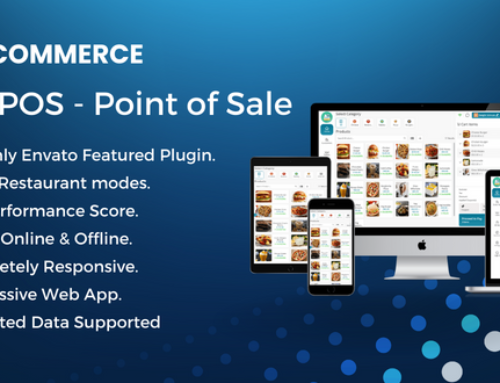What is a Visitor Management system?
A Visitor Management System (VMS) is a software solution that manages the registration, tracking, and verification of visitors to a particular location. It can be used by businesses, organizations, educational institutions, healthcare facilities, government agencies, and other entities to improve security, streamline visitor check-in processes, and ensure regulatory compliance. The system typically involves capturing the visitor’s information, photograph, purpose of visit, and time of arrival and departure.
The primary purpose of a VMS is to ensure the safety and security of a facility or location. By tracking visitors’ information, businesses can prevent unauthorized access to restricted areas, minimize the risk of theft, vandalism, or other types of security breaches. In case of emergencies, the VMS can help the security team in quickly identifying and locating visitors within the building or facility, thereby reducing response time.
Another advantage of a VMS is that it can help businesses streamline their visitor check-in processes. The traditional paper-based visitor sign-in process can be time-consuming and prone to errors, and can lead to long wait times for visitors. The VMS can automate the check-in process by allowing visitors to pre-register online, print out their badges upon arrival, and automatically check out when leaving the premises. This can help reduce wait times and improve the visitor experience.
The VMS can also be used to track visitor data and generate reports, which can be useful for regulatory compliance purposes. For example, healthcare facilities may need to comply with HIPAA regulations, which require them to maintain a record of all visitors who enter restricted areas. The VMS can help these facilities keep track of who is entering and leaving the premises, and generate reports to demonstrate compliance.
In addition to improving security and streamlining visitor check-in processes, a VMS can also help businesses gain insights into their visitor traffic. The system can track the number of visitors, their duration of stay, and the purpose of their visit. This information can be useful for businesses to optimize their operations and improve the visitor experience. For example, if a business finds that it has a high volume of visitors during a particular time of day, it can adjust staffing levels or schedule more staff during those hours to ensure a smoother check-in process.
When it comes to selecting a VMS, businesses have a range of options to choose from. Some systems are cloud-based, while others are installed on-premises. Some systems offer advanced features such as facial recognition, while others focus on the basics of visitor registration and tracking. Businesses should evaluate their specific needs and budget to determine which VMS is right for them.
A Visitor Management System is an essential tool for businesses, organizations, and other entities that prioritize safety, security, and regulatory compliance. By automating the check-in process, tracking visitor data, and generating reports, the VMS can help businesses streamline operations, improve the visitor experience, and reduce the risk of security breaches.
Why is visitor management system important?
A visitor management system is a software-based solution that is designed to streamline the process of managing visitors to a facility, such as an office building, school, hospital, or manufacturing plant. It typically includes tools for registering, tracking, and verifying the identity of visitors, as well as monitoring their movements within the facility. The system can be used to enhance security, improve compliance, and provide a better experience for both visitors and staff.
One of the primary reasons why a visitor management system is important is that it can help to enhance security. By capturing basic information about each visitor, such as their name, contact details, and purpose of their visit, the system can help to identify potential security threats, such as unauthorized access or suspicious behavior. It can also track the movements of visitors within the facility, such as which areas they have accessed and how long they have spent there. This information can be used to detect unusual activity and alert security personnel, who can take appropriate action to mitigate any risks.
Another important benefit of a visitor management system is that it can help to improve compliance with regulations and policies. For example, many organizations are required to maintain accurate records of who has accessed their facilities, when they did so, and for what purpose. A visitor management system can automate the process of recording this information, reducing the risk of errors or omissions. It can also help to enforce policies around visitor access, such as requiring visitors to sign NDAs or agree to certain terms and conditions before being granted access to sensitive areas.
A visitor management system can also provide a better experience for both visitors and staff. By automating the check-in process, visitors can be processed more quickly and efficiently, reducing wait times and minimizing frustration. They can also be provided with clear instructions and directions to help them navigate the facility, reducing the risk of confusion or getting lost. For staff, a visitor management system can provide a centralized database of visitor information, making it easier to manage and analyze data about visitor activity. This can help to identify trends or patterns in visitor behavior, as well as track the effectiveness of security measures and policies.
In addition to these benefits, a visitor management system can also help to reduce costs and improve operational efficiency. By automating the check-in process, staff can be freed up to focus on other tasks, reducing the need for manual data entry and administrative tasks. It can also help to reduce the risk of errors or omissions, which can be costly to correct. Additionally, by providing a centralized database of visitor information, organizations can more easily manage and analyze data about visitor activity, which can help to identify opportunities for improvement and optimization.
A visitor management system is an important tool for enhancing security, improving compliance, providing a better experience for visitors and staff, and reducing costs and improving operational efficiency. As organizations increasingly recognize the importance of managing visitor access to their facilities, it is likely that we will see wider adoption of these systems in the coming years. Whether you are an office building, school, hospital or manufacturing plant, a visitor management system is an investment in the safety and security of your facility, and can provide a wide range of benefits to your organization.
Objective of visitor management system
Visitor management systems have become an essential tool for organizations looking to improve their security and enhance the visitor experience. The objective of a visitor management system is to provide a streamlined and efficient process for managing visitors while also ensuring that the facility remains secure. In this article, we will discuss the key objectives of a visitor management system and how they help organizations achieve their goals.
Improve Security
One of the primary objectives of a visitor management system is to enhance the security of a facility. By implementing a visitor management system, organizations can better control access to their premises, track who is entering and leaving the building, and identify potential security threats. The system can provide instant alerts to security personnel if an unauthorized visitor attempts to gain access, helping to prevent security breaches.
Streamline Visitor Check-In
A visitor management system can automate the check-in process for visitors, making it quicker and more efficient. Visitors can pre-register online, eliminating the need to manually enter their information when they arrive. This process saves time and improves the visitor experience by reducing wait times and long lines at reception areas.
Enhance the Visitor Experience
The objective of a visitor management system is also to enhance the visitor experience. By streamlining the check-in process, visitors are able to quickly and easily access the facility, creating a positive first impression. Additionally, the system can provide visitors with personalized badges, which can include their photo and company logo, making them feel more welcome and valued.
Ensure Compliance
Visitor management systems help organizations ensure that they are compliant with regulations and industry standards. For example, some facilities may require visitors to sign a confidentiality agreement or provide proof of identification. The system can ensure that these requirements are met and that visitors are properly screened before being allowed to enter the building.
Improve Record Keeping
A visitor management system provides organizations with an accurate record of who has entered and exited the facility. This information can be used for security purposes, but it can also be useful for other departments within the organization, such as human resources or accounting. For example, the system can track the number of visitors to a particular department or event, providing valuable data for future planning.
Control Costs
Visitor management systems can help organizations control costs by reducing the need for additional staff to manage the check-in process. By automating the process, organizations can free up staff to focus on other tasks, reducing the need to hire additional personnel. Additionally, the system can help prevent the loss of equipment or other assets, reducing the need for costly replacements.
Increase Efficiency
Finally, the objective of a visitor management system is to increase overall efficiency within an organization. By automating the check-in process, reducing wait times, and providing accurate record-keeping, the system can save time and improve productivity. This can have a positive impact on the entire organization, leading to increased efficiency and improved business outcomes.
Purpose of visitor management system
A visitor management system is a software-based solution that enables businesses and organizations to streamline the process of registering, tracking, and managing visitors to their premises. It is an essential tool for managing the security, safety, and efficiency of visitor traffic in organizations of all types and sizes, from corporate offices, hospitals, schools, government buildings, manufacturing plants, and more.
The primary purpose of a visitor management system is to improve the security and safety of a facility by providing an efficient means of identifying and monitoring visitors. By verifying the identity of each visitor and recording their details, such as name, purpose of visit, and length of stay, the system can help prevent unauthorized access to restricted areas, and provide an audit trail in case of a security breach or emergency.
Moreover, visitor management systems can also help organizations comply with legal and regulatory requirements related to security and privacy. For example, in many industries, such as healthcare and finance, organizations are required to maintain strict privacy and security protocols to protect confidential information. By implementing a visitor management system, these organizations can ensure that only authorized individuals are granted access to sensitive areas.
Another important purpose of a visitor management system is to improve the efficiency of the check-in process for visitors. Traditionally, organizations used paper-based sign-in sheets or manual processes to register visitors, which can be time-consuming and prone to errors. With a digital visitor management system, visitors can check-in quickly and easily, and staff can access their details instantly, improving the overall visitor experience.
Additionally, a visitor management system can help organizations gather data and insights about visitor traffic, which can be used to improve operations and optimize resource allocation. For instance, by analyzing data on the frequency and duration of visits, organizations can identify peak periods of visitor traffic and adjust staffing levels and resources accordingly.
Moreover, visitor management systems can also help organizations with compliance and reporting requirements, as they can generate various reports on visitor data, such as visitor logs, check-in and check-out times, and visitor activity. These reports can be used to monitor and improve the effectiveness of security protocols, identify potential areas of risk, and demonstrate compliance with regulatory requirements.
Conclusion
In summary, a visitor management system is a critical tool for managing the security, safety, and efficiency of visitor traffic in organizations of all types and sizes. It provides a range of benefits, from improving security and privacy compliance, to streamlining visitor check-in and enhancing the overall visitor experience. By leveraging the data and insights provided by a visitor management system, organizations can optimize their operations, improve resource allocation, and achieve their overall business objectives.
A visitor management system typically involves visitors checking in at a kiosk or with a staff member who enters their information into the system. The system then generates a badge or temporary access pass for the visitor to wear while on the premises. The system may also send notifications to hosts or security personnel when a visitor arrives or departs.
Key features to look for in a visitor management system include customizable check-in workflows, automated badge printing, visitor pre-registration, real-time visitor tracking, integrations with other security systems, and robust reporting and analytics capabilities.
Visitor management systems can benefit a wide range of organizations, including corporate offices, schools and universities, healthcare facilities, government agencies, manufacturing plants, and more.
Yes, many visitor management systems offer features such as health screenings and contact tracing to help organizations comply with COVID-19 safety guidelines and protect their employees and visitors.
The cost of a visitor management system can vary depending on the size of the organization, the number of locations, and the specific features and capabilities needed. Some systems may charge a monthly or annual subscription fee, while others may charge per visitor.
Yes, most visitor management systems offer robust security features to protect visitor data and prevent unauthorized access. This may include encryption, multi-factor authentication, and access controls.
Yes, many visitor management systems can integrate with other security systems such as access control systems, surveillance cameras, and emergency notification systems.
To choose the right visitor management system, consider your organization’s specific needs and goals, as well as your budget and any existing security systems you have in place. It’s also a good idea to read reviews and compare features and pricing from multiple vendors before making a decision.








